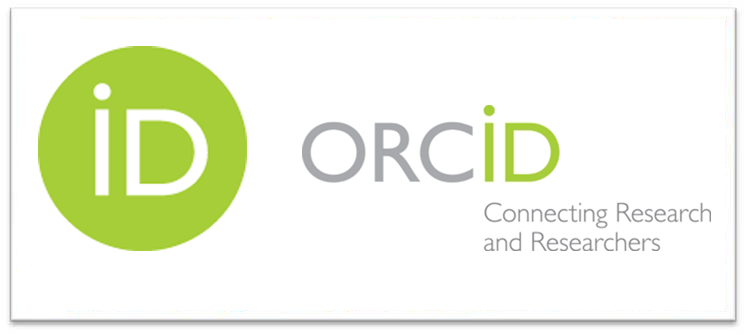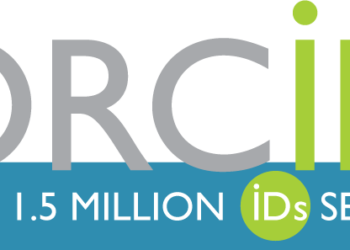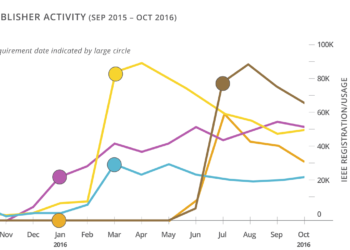This year, the ORCID US Community consortium, managed by Lyrasis, celebrates its fifth anniversary. Launched in 2018 as a partnership between four existing ORCID consortia in the United States — the Big Ten Academic Alliance (BTAA), the Greater Western Library Alliance (GWLA), Lyrasis, and NorthEast Research Libraries (NERL) — its goal is to support ORCID adoption and foster a community of practice around ORCID in the US as part of a shared vision of national-scale open scholarly infrastructure.
Sheila Rabun, now Program Leader for Persistent Identifier Communities at Lyrasis, has been leading the community engagement efforts since the start. Today, she shares some of the success stories and the lessons learned, as well as looking ahead to the next five years of ORCID — and persistent identifiers (PIDs) more generally — in the US Community.

Let’s start with a brief history of the ORCID US Community consortium — when and why was it launched, how it has grown since then, and how is it funded?
Prior to 2018, there were four separate ORCID consortia in the United States, all led by the university library community. However, this somewhat scattered approach made it difficult to build a cohesive community of practice around ORCID across the US. Looking to our counterparts in other countries around the globe, it became apparent that a unified, national structure would be needed in order for researchers and institutions in the US to really get the most benefit from ORCID. With encouragement from the ORCID organization, Lyrasis reached out to BTAA, GWLA, and NERL; together we recognized the need to scale our efforts to support ORCID integration and adoption through a shared national program for non-profit, non-federal government ORCID member institutions (the US federal government has its own ORCID consortium). The four consortia joined forces and combined their ORCID programs into a single national ORCID consortium — the ORCID US Community — and Lyrasis was designated the administrative home. Each consortium was already sustaining its existing program through administrative fees, so we decided to continue that practice to fund the staffing needed to manage the national program. At the time, there were already 88 ORCID members across the four existing consortia, so we had a good head start. Initially, all of the individuals involved in the community were from university libraries, but over time the community has grown to include professionals from other areas, such as the research office, sponsored programs, graduate school, and central IT. We have also been able to welcome other types of non-profit organizations to the consortium, such as health and hospital systems, funders, associations, societies, and other research groups. With steady growth in membership, we hired Paolo Gujilde as our ORCID US Community Specialist in 2021. At the time of writing, there are 197 organizations in the consortium, so we are steadily approaching the 200 member milestone! We have also seen a steady increase in the number of ORCID member API (Application Programming Interface) integrations, from 65 integrations in 2018 to 307 integrations as of June 2023. The number of ORCID iDs connected to those integrations has also increased, from 70,641 in 2018 to 406,079 today. With all of this growth and activity, we will be looking to hire a third staff person later this year so that we can continue to provide high levels of dedicated support for our members.
What about your role, Sheila? How has that changed and developed over time?
I was hired in 2018 as the ORCID US Community Specialist, dedicated solely to managing the ORCID US Community consortium, providing support for members, and establishing opportunities for community engagement. The success and growth of the program in the first few years indicated that we were indeed filling a need by providing a national structure for organizations to get involved with ORCID. It quickly became apparent that ORCID does not operate in a vacuum; a FAIR research information ecosystem relies on multiple persistent identifiers and open, interoperable metadata. So, over time, our resources and programming have expanded from being very ORCID-specific to focusing on how ORCID fits within the wider ecosystem and how it works with various software systems and other identifiers. In 2021 Lyrasis launched a DataCite consortium for US non-profits, providing a pathway for them to participate in open infrastructure and related best-practices by assigning DataCite DOIs (Digital Object Identifiers) to their local research and scholarly materials. So I am now focused on the bigger picture, providing support and education for organizations that are using both ORCID and DataCite DOIs.
What are some of your most successful community engagement activities? Why do you think they worked so well, and how did you measure success?
We measure success by the number of people who express interest and/or attend our events, the volume of questions that we receive, and by the growth in usage of ORCID and the ORCID API across our community. When our ORCID consortium reached 100 members in the fall of 2018, we hosted a “Community Showcase” webinar, featuring case studies from a few of our ORCID member organizations. This event was well-attended, as I think people are always interested in hearing how others are using ORCID and lessons learned. We have continued to host these Community Showcase events, as well as other ORCID-related webinars, and they continue to garner a lot of interest. We try to write up the case studies as blogs as well, so we can have good written examples on hand to share. We also host regular community calls on different topics related to ORCID, to keep ORCID in the forefront of people’s minds. We know that the individuals participating in our community are very busy, and ORCID is typically only one small part of what they need to keep up with on a daily basis, so we strive to provide forums to educate, share examples, provide guidance, and answer questions on a regular basis.
All of our events are open to anyone who is interested, not just our members. Our motto is “the more the merrier” because, quite literally, the more people and organizations using ORCID, the more we can all benefit. We also have a community awards program, which recognizes individuals and organizations for their hard work and contributions related to ORCID in the US, which helps to add to people’s motivation and excitement around getting involved.
Over the years, we have developed a number of community resources that are openly available for anyone to use, and we have received feedback that these resources are actively being used and are helpful. This year, we added a new data visualization resource, which allows anyone to create a visual map of publication collaborations for researchers at a single home institution, based on public data from ORCID records. We are hoping that people will use this to create their own visualizations and provide us with feedback.
What has been less successful, and why?
We have tried a few things that have not worked as well in terms of the number of people participating. For example, we have had some “open office hours” sessions where very few people showed up, probably due to busy schedules and no designated topic. We have also had some virtual events that include breakout groups to discuss specific topics. Although we would typically get several people joining the call initially, many drop off when we announce the breakout groups. I suspect that attendees were expecting to be able to sit back and listen to a presentation rather than actively participate in discussion. It takes a certain amount of mental preparation to talk to others! However, we have received feedback from those who did stay on to participate that the small group discussion was extremely valuable. We therefore started an opt-in “random coffee breaks” program where those who want to participate are randomly grouped with others to meet virtually a few times a year to discuss what they are doing with ORCID. About 30 people are currently participating in this program and have found it valuable not just for learning and thinking about ORCID, but for networking and building connections with other individuals in the community.
The ORCID US Consortium is one of 26 current ORCID consortia. What have you learned from the experience of others — and what have they learned from you?
When the ORCID US Community was formed in 2018, there were already several national ORCID consortia in different countries across the globe, so we had some great examples to follow. For example, the Australian ORCID consortium, led by the Australian Access Federation, was especially inspirational for our website and community resources, as well as for our data visualization project. We keep in close contact with our counterparts in other countries, sharing knowledge, advice, and engagement strategies with each other. I know other ORCID consortia have adopted our practice of offering regular community calls; sometimes we do joint community calls co-hosted with the Canadian ORCID consortium, led by the Canadian Research Knowledge Network, for example. We are very fortunate to have excellent colleagues leading other national ORCID consortia around the world, as well as the expert staff at ORCID, creating a supportive network that we can draw from and contribute to as we advocate for a more FAIR future in the US.
What do you see as the biggest barriers to really widespread ORCID adoption and implementation in the US, and how can we tackle them?
There are two main barriers specific to ORCID adoption in my opinion: individual researchers not using their ORCID iD and ORCID record, and lack of ORCID API integration in the many software systems being used in the research ecosystem. Many researchers, especially those who are receiving grant funding and publishing their research, understand how their ORCID iD can distinguish them. Whether those researchers are willing to keep the information in their ORCID records up to date is a different story. And, if a researcher is working with an organizational system that has the ORCID API built in (such as a publishing system, grant management, repository, or research information management system), they may or may not take action to connect their ORCID iD with it, depending on how it may or may not benefit them. This inaction or lack of understanding on the part of individual researchers is one barrier, however, we can mitigate it by providing educational opportunities for researchers to learn more about how and why they should not only have an ORCID iD, but also keep their information up to date and connect their ORCID iD to the systems they use. We offer a free “ORCID Workshop for Researchers” webinar several times a year to help with this issue, which has proven popular, with over 1,000 registrants in the first half of 2023; we always make the recordings publicly available on our ORCID US Community Youtube channel. We also have a number of outreach resources to help organizations engage with their researchers as well.
On the flip side of this, many organizations use vendor software systems that don’t have an ORCID API integration built in. We need more systems to be integrated with ORCID in order to really reach the full potential benefits of using ORCID for both researchers and organizations. These integrations need to offer functionality to both import data from and write data to ORCID records. Researchers can save time by importing data from their ORCID records to fill out things like grant applications and progress or activity reports. And, when an organization is writing information to a researchers’ ORCID record on their behalf, the information contained within the ORCID registry is more trustworthy and authoritative, and the researcher doesn’t have to worry about keeping their ORCID record up to date manually. When ORCID connections are established, both researchers and organizations across the research and scholarly communication landscape can save time and get credit for their contributions more easily.
That said, over the past five years I have seen these barriers decrease as more organizations are seeing the benefits of ORCID and becoming members, more software systems are integrating with the ORCID API, policymakers are recognizing the need to either require or encourage researchers to use ORCID, and researchers are increasingly getting and using their ORCID iDs.
Of course, to have a real impact, we need to see broad adoption of a multitude of PIDs, not just ORCID, which is why it was so great to see Lyrasis taking on management of the DataCite US Consortium, which you also lead. Can you tell us a bit about your experience with that, and how it has affected your work with the ORCID US Community?
After working with multiple stakeholders to encourage ORCID adoption, it became clear very quickly that other open PIDs and open technologies are integral to creating a more efficient scholarly communication ecosystem for all. The more we can link PIDs together, the more easily we can gauge research activity. For example, when the DOI for a researcher’s publication or dataset is in their ORCID record, and when their ORCID iD is in the DOI metadata, this enables us to make a connection between the person and their output. Likewise, ROR (Research Organization Registry) identifiers enable us to link to organizations, and RAiD (Research Activity Identifier) identifiers connect multiple entities as part of a research project. The list goes on. Our success in leading the ORCID consortium led us to discussions with DataCite about forming a similar consortium for US institutions. Prior to 2021, there were several regional or platform-based DataCite consortia in the US, but they weren’t available to many organizations. Lyrasis was able to fill that need. In managing both of these programs, we are able to provide support for ORCID and DOIs while educating our community about how these and other identifiers work together. Lyrasis also manages an IRUS (Institutional Repository Usage Statistics – managed by Jisc) program in the US, which not only provides open, COUNTER-compliant usage stats for repositories, but also supports usage stats based on ORCID iD and/or DOI. All of this infrastructure works together to support a more transparent and streamlined ecosystem.
Looking ahead, what do you want the ORCID US Community to look like in five years time, and how will you get there?
With the steady growth in membership and adoption that we have seen over the last five years, I believe that trend will continue and perhaps our numbers will have doubled in the next five years! Currently, all of the US federal funding agencies are in the process of setting policies related to researchers having an ORCID iD, as indicated by NSPM-33 (National Security Presidential Memorandum 33) and the recent White House Office of Science and Technology Policy OSTP memo on public access to federally-funded research. The inclusion of ORCID (and other PIDs) in these memos has raised awareness of ORCID among organizations, especially those whose researchers receive federal grant funding. While we wait for those federal funder policies to be released, there are a number of things that research organizations can do to prepare their researchers for the potential requirements. One of the most helpful things they can do is to write information to their researchers’ ORCID records using the ORCID API. My hope is that, in five years, we will see many more organizations writing information to ORCID records, and many more software systems integrated with ORCID. To get there, we will continue our community activities, webinars, and resources, as well as offering dedicated support and consultation to our ORCID members, answering questions, and educating the community about how ORCID can make their lives easier.
Lastly, what is your vision for the future of PIDs overall in the US, and what is needed to make it a reality?
I would love to see as much usage of PIDs as possible, especially linked together as related identifiers within the metadata of related entities. There is already a lot of movement in this direction, not just in the US, but globally including, for example, existing initiatives such as maDMPs (machine actionable Data Management Plans), and the Open Global Data Citation Corpus project. Additionally, a number of countries are now working on a “national PID strategy,” getting stakeholders on board from government, academia, and others invested in the research and scholarly communication ecosystem. The OSTP memo and NSPM-33 are key components towards a shared strategy for PIDs in the US, and there is also an effort underway led by the Open Research Funders Group (ORFG) to promote best practices and consensus around usage of PIDs to improve research output tracking nationwide, involving representatives from across the research landscape. So, I think we are moving toward a general national strategy, even if we don’t have all stakeholders in the same room coming up with a single policy.


